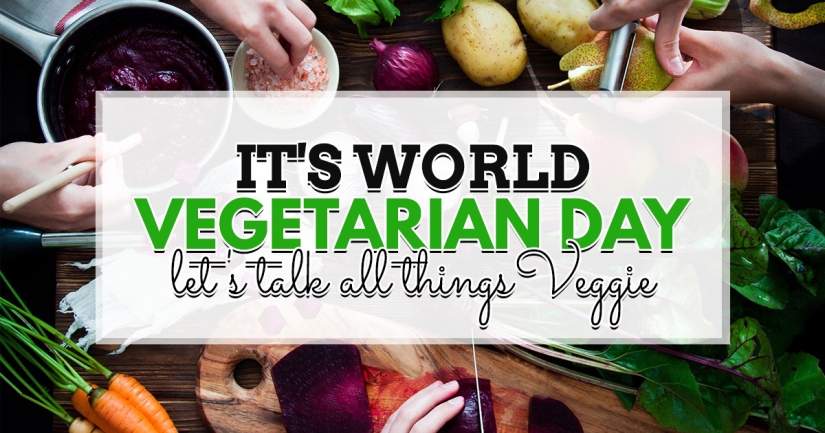Cruelty Free Beauty
- 4 signs you have low iron levels
- Zero Waste Beauty: Adopt a green routine with these sustainable products
- This eco-friendly beauty box is packed with refillable multi-taskers
- “I find myself using it even when I don’t need to!”
- Arctic-inspired natural skincare brand launches in the UK
- Green People launches beauty balm packaged in 100% biodegradable pot
- Lush launches same-day delivery service for its iconic handmade cosmetics
- “This cruelty-free tanning water gave me the confidence boost I needed”
- rho launches sustainable loungewear that gives back
- Rose & Caramel Raises Awareness For Women’s Self-Esteem & Mental Health With ‘I TAN FOR ME’ Campaign
- Couple launches entirely plant-based and refillable deodorant on Kickstarter
- View all
Eco Living
- Simple Hacks to Cut Your Food Waste with Gino D’Acampo
- Five Easy Ways to Reduce Food Waste
- Eat these foods to boost your mood
- Upgrade Your Cheese Toastie
- Have a healthy Christmas with these festive food swaps
- Omega-3 Health Benefits
- 5 minutes with Max La Manna
- A nutritionist’s guide to eating for healthy joints
- Easy ways to achieve your health goals
- Discover the benefits of raisins on a vegetarian diet
- Improve your gut health with California Raisins
- View all
Vegan Recipes
- Quorn Vegan Hot & Spicy Burger with Pink Slaw
- Tomato and Pumpkin Soup
- Pea and elderflower cocktail
- Matcha Coconut Ice Cream
- Vegan Lemon Bars
- Mango Salad with Thai Dressing
- Garden Gimlet
- Tofu & Green Beans Teriyaki
- Cornflakes Bombay
- Rainbow Pickle
- Soba noodles with kale and collards
- View all
Popular recipes
- Spinach and ricotta quiche vegetarian recipe
- Cheats mushroom and spinach lasagne vegetarian recipe
- Lentil bolognese vegetarian recipe
- Creamy mushroom stroganoff vegetarian recipe
- Malaysian Rendang curry vegetarian recipe
- Feta, Butternut Squash, Caramelised Onion and Cashew Nut Wellingtons
News
- The Lush Halloween range is now available… and it’s all vegan
- Lush drives change in cruelty-free cosmetics with £250,000 prize fund
- British Airways commits to removing 700 tonnes of single-use plastic from flights in 2020
- New vegan ‘smoked salmon’ offers plant-based alternative to fish
- Loveseitan And Vegan Dough Co. Join Forces To Deliver Plant-powered Pizza
- Couple launches entirely plant-based and refillable deodorant on Kickstarter
- Plastic Petition pushes for greater transparency in UK recycling system
- This inclusive vegan underwear is made from seaweed
- The Riverford Field Kitchen launches four-course veggie brunch
- Charity provides free meals to children and families with surplus food
- Big Butterfly Count calls on public to help with conservation efforts
- View all
How to create the perfect herb garden at home
Whether you're sowing seeds or caring for plug plants, now is the perfect time to get going!

April is the best time of year to create the perfect herb garden. Whether you want to use ready-grown plants, or start completely from scratch and sow a few seeds, now’s the perfect time to get going. In the current situation, with the worldwide Coronavirus pandemic putting us all in lockdown, you may not be able to find herb plants in your local garden centre. If this is the case, you can, with a little extra care, use living supermarket-grown herbs still in the pot. A word of warning though: they are not hardy, meaning they are only suitable for keeping indoors – so before you can plant them, you will need to keep them indoors for around three weeks, harvesting them very, very sparingly. After this period, harden them off outside for around 5-7 days (place the plants outside during the daytime and bring them back in at night). This gets them acclimatised to the outdoors and ready to pop them into containers where they'll romp away very quickly. You'll need to follow this process again around late summer time to ensure a good succession, providing fresh herbs way into the autumn.
Herbs for cookingAt Petersham Nurseries we have the luxury of a beautiful kitchen garden which we cram full of many different varieties of herbs ready for the chefs to add into their delicious creations. Top of the chefs list are borage, sage, thyme, rosemary, and basil, not forgetting Moroccan mint. Out of these, borage is best grown from seed. It requires a little more room to grow than the others, but it's definitely the one we love the most. The pretty little blue flowers are edible and are sprinkled over pasta and pastry alike. Once established, the tips of the plant make for delicious borage fritti – crispy deep-fried morsels.
 Potting tips
Potting tips
Generally, herbs aren’t too fussy and will cope quite well in containers as long as they are around 40cm deep, have drainage holes and are filled with a soil-based compost such as John Inns No 2. Failing that, a good organic water-retaining compost is also suitable. Regular watering is really important and if you are able to site them out of the midday sunshine, this will be much easier to manage and also encourage a strong steady growth. Also, give them a liquid feed every 2-3 weeks with an organic seaweed fertiliser – this will help speed up the growth for a regular supply.
Top tip! To get the look, take inspiration from the nurseries. Keep the containers simple by filling each one with a single herb type and grouping them together for that final stylish impact.
More from Vegetarian blog

It's World Vegetarian Day on the 1st, a day to celebrate our community and our care for the lives of animals. Don’t turnip your nose, lettuce tell you about all of our Veggie loves – and be sure to share yours with us on social media too...

This month is Sustainable Fashion Month, focusing on all things ethical in the fashion world. As a nation our thirst for fashion is hugely impacting the environment, so let's raise awareness of this important issue and champion those working to make the fashion industry a more moral place.

There's nothing better than finding a delicious, nutritious recipe that you can rustle up on a budget, so we've made a list of healthy recipes that are cheap and cheerful

Gnocchi makes a welcome change from pasta, especially for us veggies! If you only cook them halfway they will keep in the refrigerator for 2-3 days and can also be frozen. At serving time, simply cook them quickly in salted boiling water. Bellissimo!

If you're bored of avo-toast, the craze taking Instagram by storm, you've hopped off the bandwagon at the right stop as we've put together a list of new and exciting ways of using avocado...




